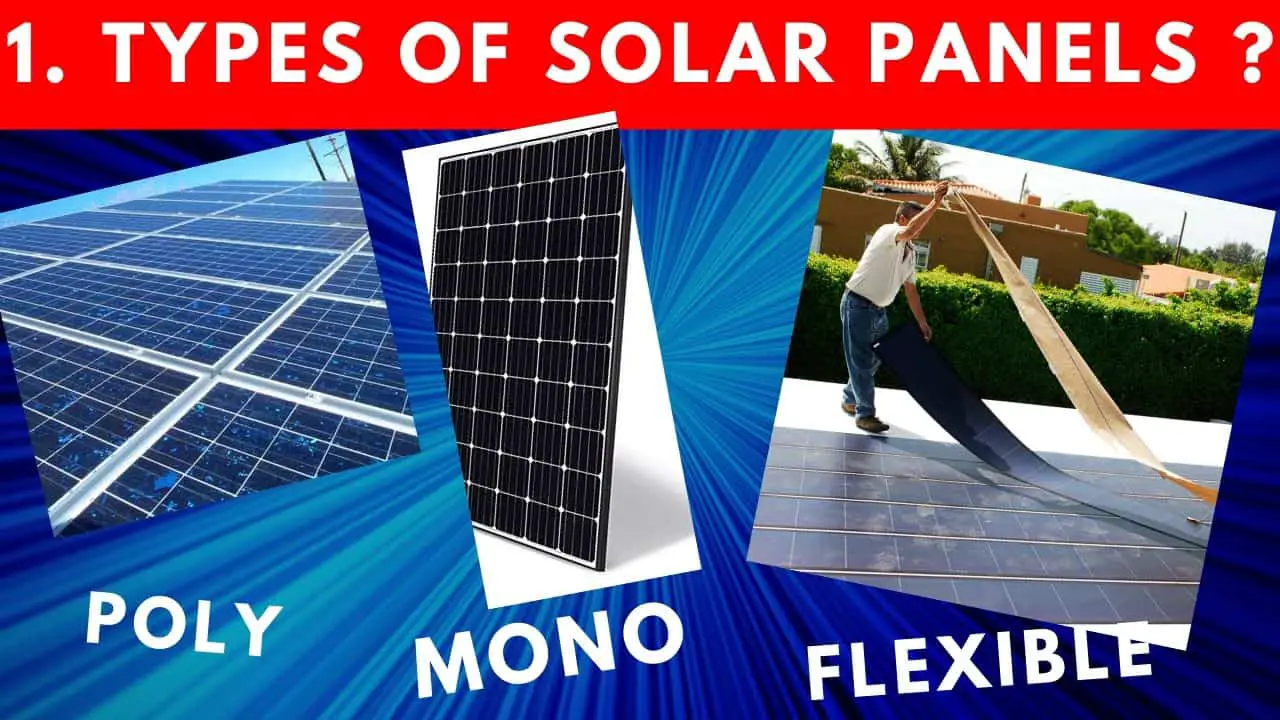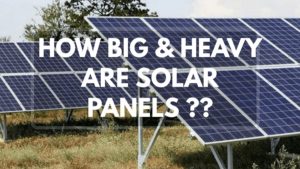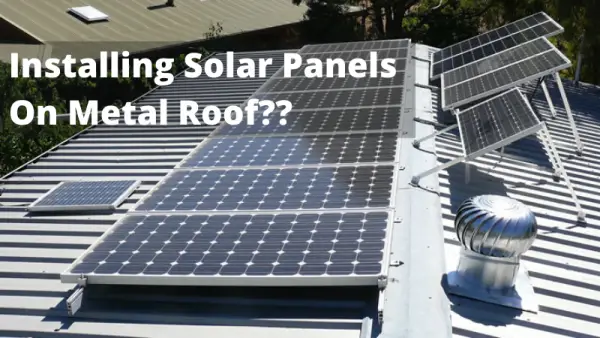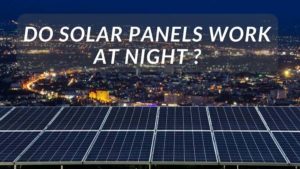What type of solar panels are available in the market and which type should I use for my home or factory, if these are the questions popping in your mind when you think of going solar, worry no more in this article we will dig deep into types of solar available in the market and discuss when to use which type.
Solar panels are majorly of three type’s mono crystalline solar panels, poly crystalline solar panels and thin film solar panels.
Each one of these can be classified based on their cell configuration like 60 cells, 72 cells, 144 cells and so on.
Latest advancement in technology has given some more efficient solar panels that are a spin off to the traditional ones, they are bifacial, half cut, PERC solar panels.
Lets start by understanding what makes a solar panel.
What Makes a Solar Panel:
Every solar panel from 50 watt to 500 watt are made up of small solar cells arranged in rows and columns to form solar panels which generate power.
Every solar cell is made up of semiconductor material (most common silicon) which absorbs photons from the incident sunlight and gives out electrons which produces electricity.
In general for home and industrial purpose solar panels has 60 cells, 72 cells, 120 cells and 144 cells ( half cut solar cells relatively new technology).
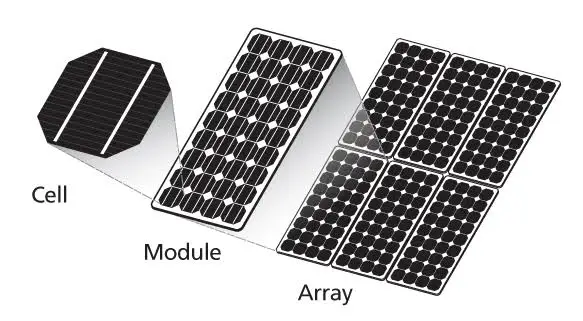
Types of Solar Panels:
1. Mono Crystalline Solar Panels:
Mono crystalline solar panels are made up of single pure silicon crystal cut from a cylindrical shape ‘silicon ingot’. The silicon ingot is cut from the four sides to make it a square with rounded edges, these can be seen in a mono crystalline solar panels. This manufacturing process is expensive and results in wastage of lots of silicon which is used to make poly crystalline solar panels.
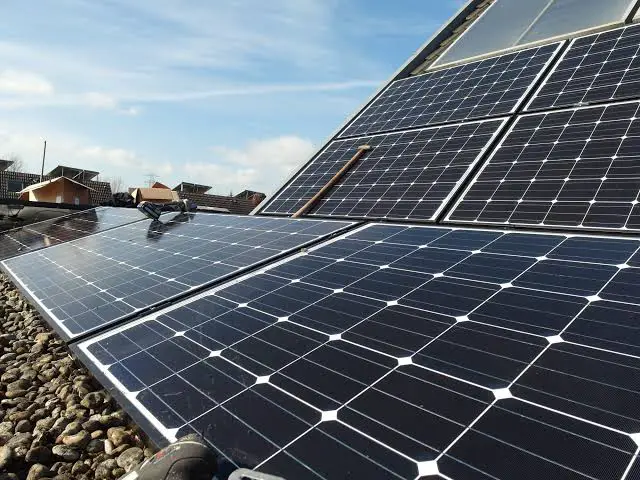
Everything about Mono crystalline solar panel:
- Appearance: The surface of the mono crystalline solar panel is black in color because of the use of pure silicon crystal and the cell are square shape with rounded edges. You can see this in the above images.
- Efficiency: Mono crystalline solar panels are the most efficient solar panels (up to 20%). This means mono crystalline solar panels can convert about 20 % of incident sunlight in useful electricity.
- Life: Mono crystalline solar panels have long operational life (more than 25 years). Most manufacturer offers 10 years manufacturing warranty and 25 years performance warranty.
- Power/sq.ft: Because of high efficiency mono crystalline solar panels produces more units of electricity per square feet in comparison with its counterpart.
- Price: Since the manufacturing process of extracting pure silicon and using it to make solar panels is very complex and expensive, mono crystalline solar panels are the most expensive of all crystalline solar panels. On an average in India their prices varies between Rs 32 / watt to Rs 50 / watt depending on the brand and cell configuration.
2. Poly Crystalline Solar Panels:
Poly crystalline solar panels are made by melting the silicon and pouring it in a mold to give it the square shape. These square shape solar cells can be seen on the solar panels. This manufacturing process is less expensive and no silicon is wasted in it.
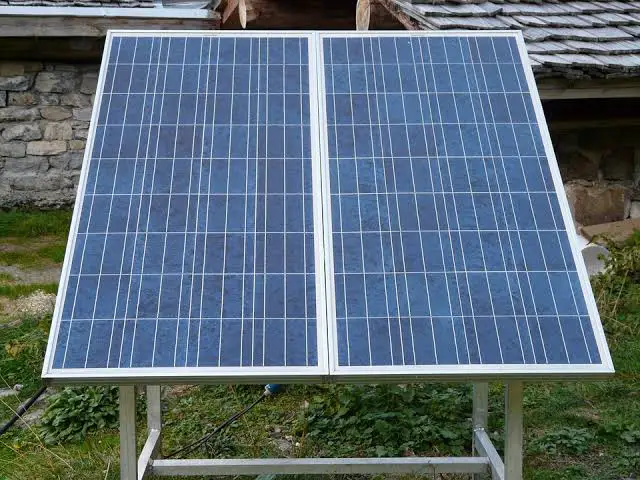
Everything about poly crystalline solar panels:
- Appearance: The surface of poly crystalline solar panel is blueish in color and the cell are square shape. You can see this in the above images.
- Efficiency: Since poly crystalline solar panels are made up of pure silicon crystal their efficiency is slightly less in comparison with mono crystalline. The efficiency of poly crystalline solar panels is around 17 %.
- Life: Poly crystalline solar panel have a long operational life (more than 25 years). Most manufacturer offers 10 years manufacturing warranty and 25 years performance warranty.
- Power/sq.ft: Because of their less efficiency poly crystalline solar panels produce slightly less units of electricity per square feet in comparison with mono crystalline solar panels.
- Price: Because of easy manufacturing process poly crystalline solar panels are less expensive than mono crystalline solar panels. On an average in India the prices of poly crystalline solar panel varies between Rs 19/watt to Rs 25/watt.
Don’t like reading then watch this video to know about types of solar panels
3. Thin Film Solar Panels:
Thin film solar panels are flexible solar panels which you might have seen on a camping backpack. Thinfilm solar panels are normally used for small power generation and places that need flexible solar panels arrangement.
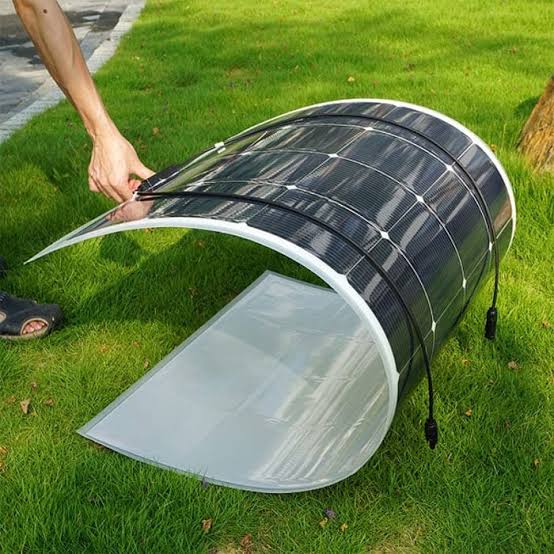
Everything about thin film solar panels:
- Appearance: Thin film solar panel are flexible in nature, easily shaped like a plastic sheet.
- Efficiency: The efficiency of thin film solar panels is between 5 -10 %.
- Life: Thin film solar panel have a long operational life (more than 25 years).
- Power/sq.ft: Because of their less efficiency thin film solar panels produce slightly less units of electricity per square feet in comparison with crystalline solar panels.
- Price: Generally they are cheap when compared with mono and polycrystalline solar panels.
There are majorly three types of thin film solar panels commercially used in the industry namely amorphous silicon, Cadmium – Telluride (Cd-Te), Copper indium gallium selenide (CIGS).
- Amorphous Silicon: If you have used a pocket size calculator then the blue color lens on top of the screen is amorphous silicon PV cell. As the name suggest amorphous silicon PV cells are not made up of crystals of silicon unlike crystalline PV panels but are made up of amorphous (unstructured) silicon. They have less efficiency and are majorly used for small power applications.
- Cadmium-Telluride (Cd-Te): Cd-Te is the most efficient thin film solar panel with efficiency around 9%-11%. The downside of Cd-Te PV panels is it’s toxic nature if inhaled or ingested.
- Copper Indium Gallium Selenide (CIGS): CIGS solar panels have also shown a lot of promise because of it’s cheap manufacturing cost, good efficiency (8%-10%) and less toxicity.
Apart from these 3 types of solar panels you might have heard about Concentrated Photo voltaic (CPV), Building Integrated Photo voltaic (BIPV), Bifacial solar cells, PERC solar panels and Half cut solar panels, lets talk about them in some detail to get an idea of what they are.
4. Concentrated solar panels:
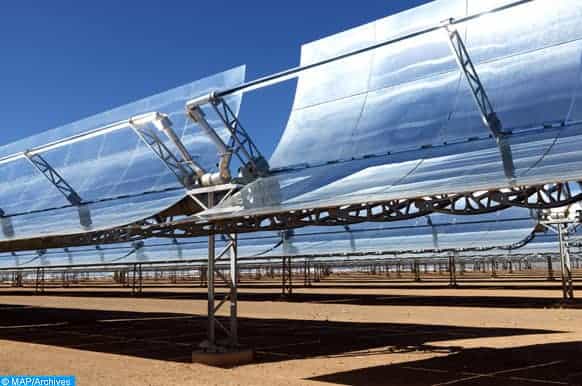
Concentrator photovoltaics (CPV) (also known as concentration photo voltaics) is a photo voltaic technology that generates electricity from sunlight. Unlike conventional photovoltaic systems, it uses lenses or curved mirrors to focus sunlight onto small, highly efficient, multi-junction (MJ) solar cells.
In addition, CPV systems often use solar trackers and sometimes a cooling system to further increase their efficiency.Ongoing research and development is rapidly improving their competitiveness in the utility-scale segment and in areas of high insolation.
CPV has efficiency as high as 41% and it is poised to touch the 50% mark by 2020-21.
5. Building Integrated Photovoltaics (BIPV)
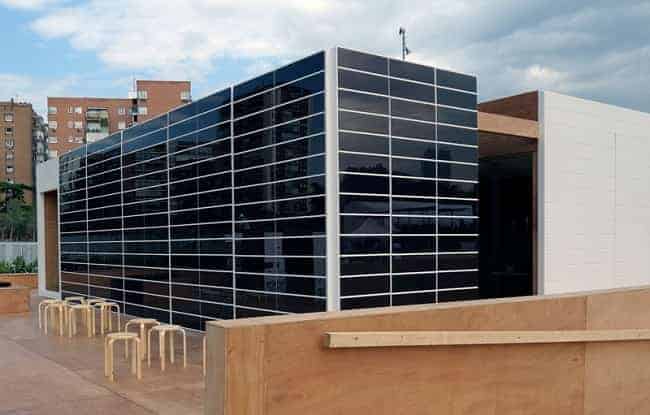
Building integrated photo voltaics as the name suggests are integrated with building material. BIPV can be facades, roofs, windows, walls and many other things that is combined with photo voltaic material. If you have the extra money and want to seemlessly integrate photovoltaics with the rest of your home, you should look up building integrated photovoltaics. For most homeowners it`s simply way too expensive.
6. Half Cut Solar Panels
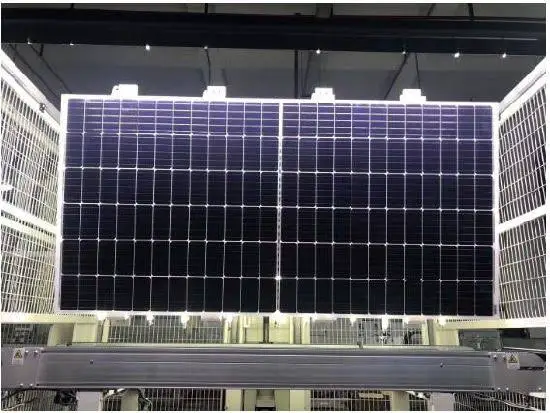
Half cut solar panels as the name suggests have cells cut in half meaning a 72 cells solar panel becomes 144 cells solar panel.
The reason why half cut solar panel has come into existence is because half cut solar panels offer more efficiency and and less effected by shading (high shade tolerance).
In Half cut solar panels the current flowing through each cell is less in comparison with standard 72 cells solar panels hence there is less resistance to the flow, so less power loss and more overall efficiency.
You can check out this amazing article from Energysage to know more about why half cut solar cells have more efficiency Half Cut Solar Cells.
7. Bifacial Solar Panels
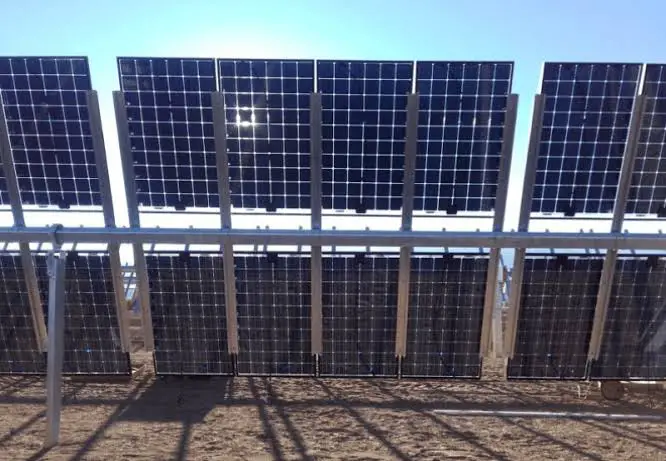
Traditional solar panels capture sunlight on one light-absorbing side, and light energy that cannot be captured is simply reflected away. This is not the case with bifacial solar panels- rather, these types of panels have solar cells on both sides.
This enables the solar panels to absorb light from the back as well as the front. So after absorbing the incident sunlight the rest of it is transmitted through the solar panel as it is transparent. The transmitted sun rays hits the ground and gets reflected back and hits on the other side of solar panel. Hence dual power generation is achieved.
Bifacial solar panels are mostly used in places where solar panels are elevated and angled away from a mounting surface, allowing light to reflect into the back of the panel.
8. PERC Solar Panels
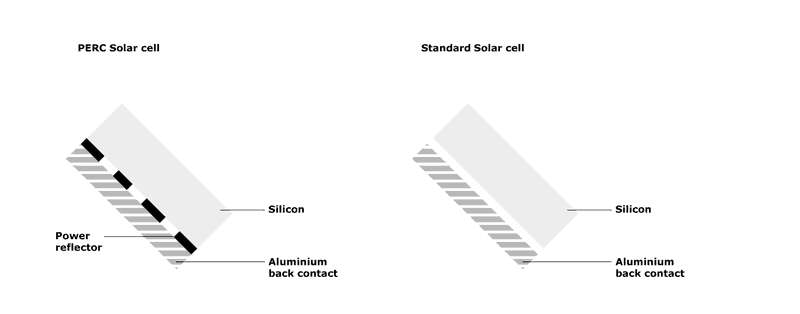
PERC can stand for either Passivated Emitter and Rear Cell or Passivated Emitter and Rear Contact. At its core, a PERC solar cell is simply a more efficient solar cell.
Solar panels made from PERC solar cells typically perform better than traditional panels in both low-light conditions and high temperatures. PERC technology boosts efficiency through the addition of a layer to the back of a traditional solar cell, which provides several benefits to the cell’s production.
A back surface passivation layer reflects light that passes through the silicon cell without being absorbed back into the silicon, giving the solar cell a second absorption attempt. This reflection of light means that more incoming solar radiation will end up being absorbed by the silicon cell, thus the cell becomes more efficient.
You can check out this amazing article from Energysage to know more about PERC Solar Cells.
Where To Use Which Solar Panel:
It can be confusing to decide which solar panel to pick for you solar installation but don’t worry it just read the below section and you are good to go.
- Poly crystalline Solar Panels: Poly crystalline solar panels are the most widely used solar panels for residential and commercial application. If you are having enough space for solar installation and your location gets 6-7 sun hours for 300 days in a year then use this panels as they offer excellent efficiency, long life under affordable pricing.
- Mono crystalline Solar Panels: Mono crystalline solar panel are suitable for places where you have less area for solar panels installation and your location receives 3-4 sun hours for 200 -250 days. Mono crystalline solar panels will give you the added efficiency and low light generation but will cost you on your pocket.
- Thin film Solar Panels: Thin film solar panels are nowadays used as integrated building material but common application are for small power application. Some applications of thin film solar panels that you might have seen are calculators, back packs, RV’s.
Apart from these the bifacial, PERC, half cut solar panels can be used for residential or commercial application but can escalate the project cost substantially.
Conclusion:
To concluded I would like to say there are two main types of solar panels for residential, commercial and industrial application they are mono crystalline and poly crystalline solar panels with more than 72 cells.
You can use mono crystalline solar panels if your budget permits and you have less rooftop area than what is required to completely suffice your solar requirement.
If you have enough area then go for poly crystalline as they will cost you less and will get the job done.
Crystalline solar panels comes with some variation for improved efficiency like Bifacial solar panels, PERC solar panel, Half cut solar panels. You can opt for these as well if the budget permits.
If I have left any details or you feel anything more needs to be added then please leave comments I will try to add all the relevant comments.
Also feel free to share this article on Pinterest, Facebook, Reddit, WhatsApp so more and more people can know about this and make more informed decision.


